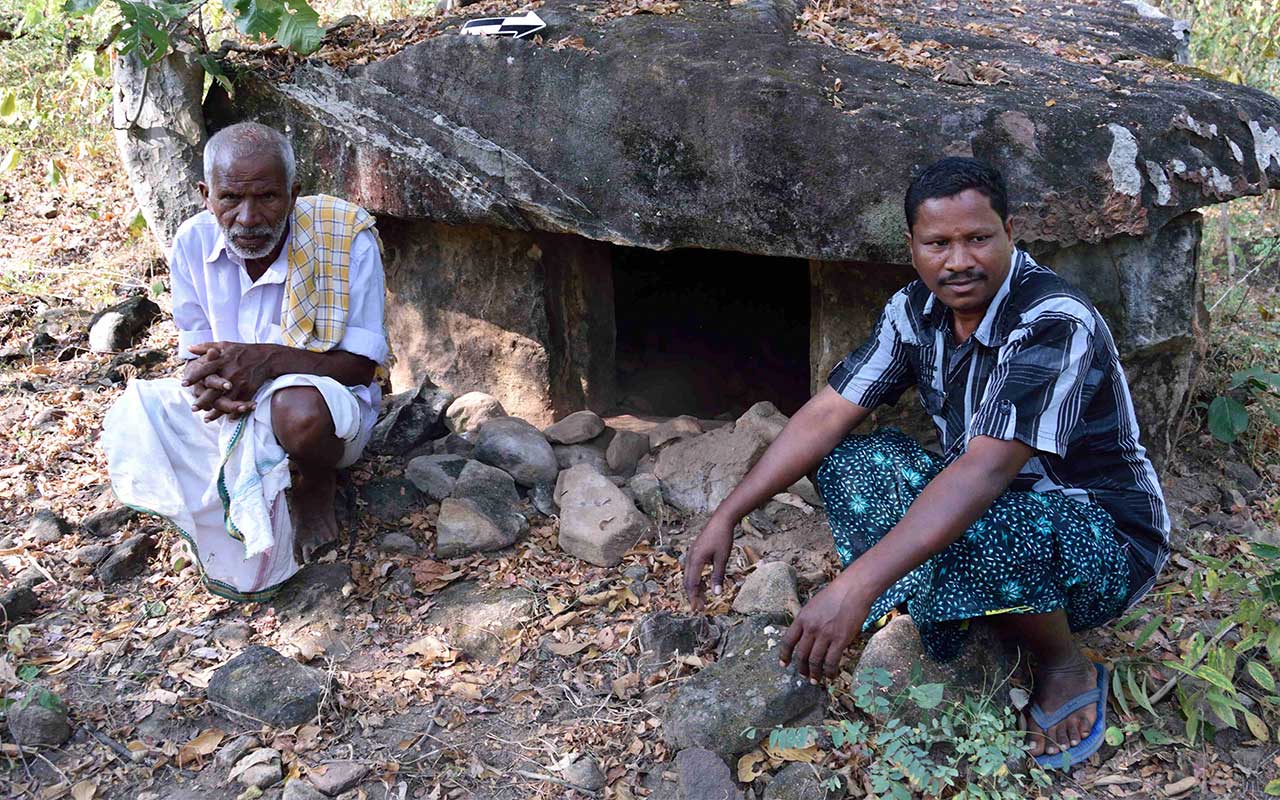
UC San Diego Archaeologist Explores Prehistoric Sites in Indian State for Conservation
Research center hopes to forge cyber-archaeology MoU with government department
Published Date
By:
- Doug Ramsey
Share This:
Article Content
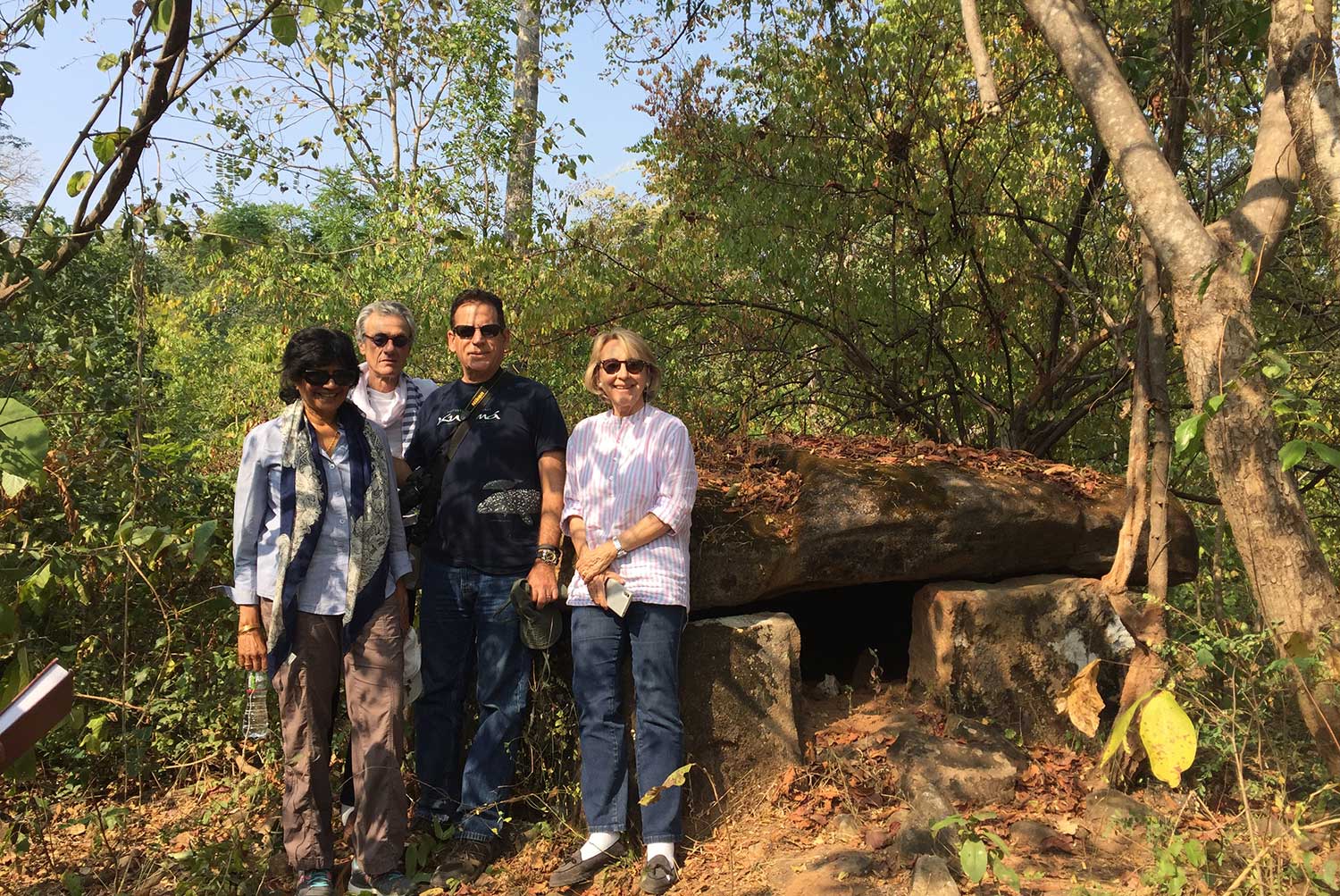
UC San Diego’s Tom Levy (second from right) at dolmen burial site in untended forest, with (l-r) Alina Levy, Dr. Stephane Bloch Saloz and Dr. Helen Philon, both of the Deccan Heritage Foundation.
An American archaeologist best known for decades of work in Jordan and Israel and as a co-founder of the Mediterranean Archaeology Network is now looking further east for potential new projects in the field of cyber-archaeology for the new Center for Cyber-Archaeology and Sustainability (CCAS) housed at UC San Diego’s Qualcomm Institute.
Thomas E. Levy, a distinguished professor of Anthropology at the University of California San Diego, was in south-central India to tour 10 cultural heritage sites across five districts in the new Indian state of Telangana and its capital city, Hyderabad. The UC San Diego professor was invited by N.R. Visalatchy, Director of the state’s Department of Archaeology and Museums.
Professor Levy met Mrs. Visalatchy in Greece earlier this summer, when she was a guest of Dr. Helen Philon, one of the founders of the Deccan Heritage Foundation, which works to preserve heritage sites in southern India. Impressed by the Cyber-Archaeology work-flow Levy and his team employed on an excavation near Delphi with the University of the Aegean, Visalatchy invited Levy and his wife Alina to visit the new Indian state of Telangana to see a sample of important archaeological and heritage sites.
According to a report in The Hindu daily newspaper by T. Karnakar Reddy, ““Impressed by the work of CCAS, Visalatchy invited Prof. Levy to Hyderabad to study the possibility of taking up a joint project by CCAS and the Department of Archaeology and Museums.”
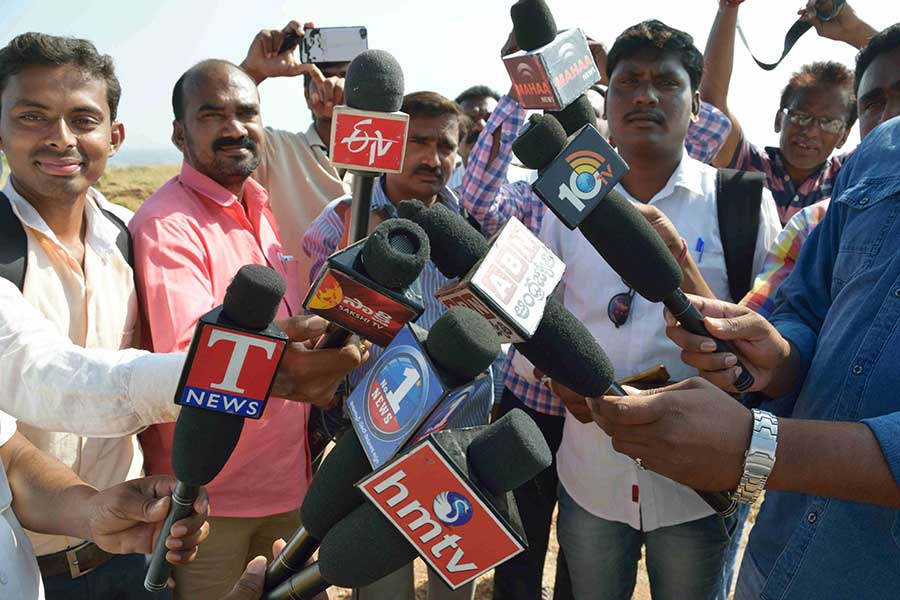
Photo taken by Tom Levy on arrival at the tranquil Buddhist temple site at Phanigiri, with up to 20 journalists in attendance.
The visit attracted plenty of attention from local news media. “Every day the media has followed us on our site visits,” said Levy, Director of the Qualcomm Institute’s Center for Cyber-Archaeology and Sustainability (CCAS) at UC San Diego. “We went to visit the tranquil Buddhist site at Phanigiri and there were 20 TV, radio and print journalists from all sorts of media waiting for us!”
Added Levy: “There is a beautiful dynamism about the new state of Telangana. My impression is that they are committed to exploring and preserving their rich cultural heritage in the most efficient way possible. This is why they are interested in partnering with the CCAS.”
The print coverage included articles in English-language media such as the Deccan Chronicle and The Hindu, as well as local daily newspapers such as Sakshi in Telugu (the primary language in both Telangana and Andhra Pradesh, which borders Telangana to the south).
Levy arrived in Hyderabad on December 13, and said he hoped the week-long tour would eventually lead to the signing of a Memorandum of Understanding (MoU) between CCAS and Telangana state officials to work jointly on digital preservation of monuments in the state using cyber-archaeology technologies.
The sites visited by Levy and his wife Alina (who is also affiliated with CCAS and has participated in more than 20 archaeological expeditions as a logistics officer) included the Qutb Shahi Tombs (where rulers of the Qutb Shahi dynasty, circa 1518–1687, are buried).
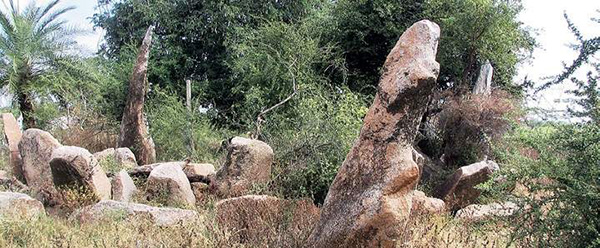
Just a few of the 80 large standing stones (menhirs) at the Mudimala megalithic burial ground in Mahbubnagar.
Nearby they also toured a megalithic burial site at Mudimala in Mahbubnagar (south of Hyderabad). The tombs include over 80 menhirs (standing stones), one of the largest concentrations of menhirs in a single location.
On Friday, December 16, the team also visited another megalithic burial site near the village of Dameravai in Tadvai forest. The site features a collection of 130 large dolmens estimated to be roughly 5,000 years old. (Each dolmen consists of a large flat stone laid on two or more upright stones.) According to Levy, it is “very rare” to find so many dolmens packed at one location.
The UC San Diego group’s itinerary took them to the town of Warangal (northwest of Hyderabad) for two days. They visited temples at Hindu Ramappa and Ghanpur, as well as Warangal Fort, which dates back at least to the 12th century (when it was the capital of the Kakatiya dynasty).
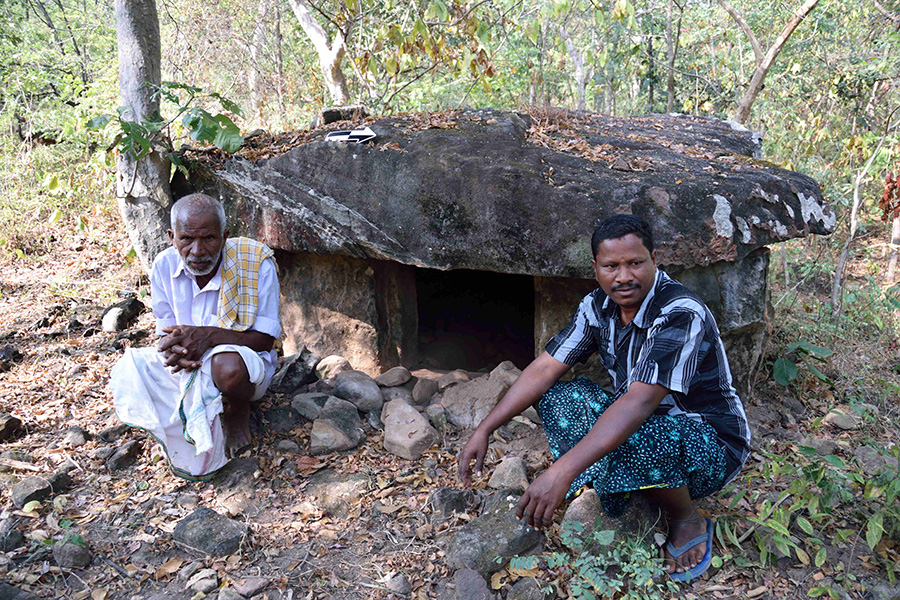
Local tribesmen from Tadvai forest helped lead the group from UC San Diego and the Department of Archaeology and Museums to some of the most impressive dolmen monuments.
According to Levy, the most promising of the sites visited for a first joint project is the hidden prehistoric dolmen field in the Tadvai forest. “Soon we hope to come back again to conduct an aerial survey of the area along with a Lidar survey and a drone camera survey to get a digital picture of the area,” Levy told Deccan Chronicle reporter Anudeep Ceremilla. “This way we can study about how prehistoric man lived about 5,000 years back.”
Levy went on to note that “these structures can be preserved by 3D mapping” to be carried out in future expeditions to the sites subsequent to the planned MoU and the availability of funding to carry out a complete cyber-archaeological survey of the sites. “We would like to work with the Department of Archaeology and Museums and carry out a number of Cyber-Archaeology digital data capture applications and then host the 3D data online and in a 3D immersive CAVE platform at the State Museum of Telangana, so that the public can experience this unique cultural heritage,” noted Levy. “The project will also help promote tourism in the Tadvai forest region that is also home to the Eturnagaram Wildlife Sanctuary. Our team could also teach our Telangana archaeology colleagues our digital workflow so that they could record and digitally conserve many more sites in the state.”
“The monuments in Warangal and other places in the state are amazing,” Levy told a reporter from the Deccan Chronicle. “We are excited [about the possibility] of studying these historic locations in the future.”
Share This:
You May Also Like
Stay in the Know
Keep up with all the latest from UC San Diego. Subscribe to the newsletter today.
